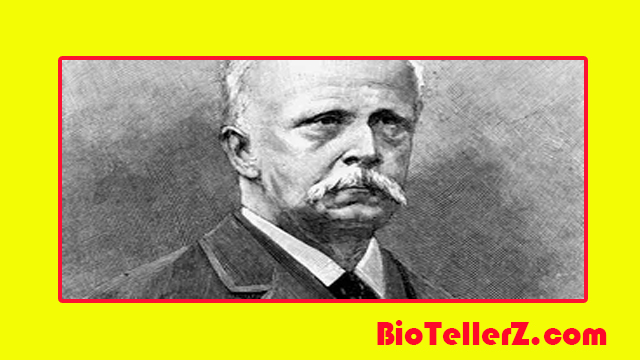Hermann Ludwig Ferdinand Helmholtz, also known as Hermann von Helmholtz, was a German scientist and philosopher who was born in Potsdam, Prussia, on August 31, 1821, and passed away in Charlottenburg, Berlin, Germany, on September 8, 1894. In the areas of physiology, optics, electrodynamics, mathematics, and meteorology, he made important strides. He made the law of energy conservation, for which he is best known. He analyzed the philosophical assumptions that underpinned much of the 19th century’s science with clarity and precision.

Young Age
The oldest of four kids, Helmholtz, had to spend his first seven years at home due to his deteriorating health. His father was a professor of philosophy and literature at the Potsdam Gymnasium, and his mother was a direct descendant of William Penn, who founded Pennsylvania. His mother is responsible for his calm and reserved demeanor throughout his life. His father left him with a diverse and extensive intellectual background. In addition to the classical languages, his father also instructed him in French, English, and Italian. He also introduced him to the writings of Johann Gottlieb Fichte and Immanuel Kant, as well as their respective philosophical philosophies and perspectives on nature.
This “Nature philosophy” was transformed into a speculative science in the early 19th century by researchers who believed that rather than relying on empirical information gathered through observations of the natural world, scientific conclusions could be drawn from philosophical notions. Later research by Helmholtz put a lot of emphasis on refuting this idea. His father’s aesthetic sensibility, however, had a long-lasting influence on his empiricism, and music and painting had a big impact on his science.
After receiving his medical school diploma in 1843, Helmholtz enlisted in a regiment in Potsdam. He conducted experiments in a temporary lab he set up in the barracks considering how little work he had to do for the army. Olga von Velten, a military surgeon’s daughter, was also married to him at that time. Due to his obvious scientific prowess, Helmholtz was soon released from his military obligations. He began his professional life in Berlin in 1848 as a lecturer and assistant at the Academy of Fine Arts. The following year, he moved to Königsberg, East Prussia (now Kaliningrad), where he was appointed director of the Physiological Institute and assistant professor. He accepted a position as professor of anatomy and physiology at the University of Bonn in 1855, but moved to Heidelberg in 1858 due to his wife’s poor health brought on by Königsberg’s harsh climate. During this period, his scientific interests shifted from physiology to physics.
He worked a variety of jobs, which show his interests and skill but not his thought processes. He didn’t start out in medicine, then switch to physiology, and finally take a detour into math and physics. Instead, he was able to synthesize the knowledge he had acquired from his experience in these fields and apply it to every problem he considered. His most well-known work, Handbook of Physiological Optics (1867), was characterized by a keen philosophical insight, shaped by exact physiological investigations, and illustrated with mathematical skill and sound physical principles. All of his scientific works exhibited this trait.
The core idea that underlies the majority, if not all, of Helmholtz’s works can be traced to his vehement rejection of the Nature philosophy, and the intensity with which he did so may well be an indication of his early attraction to this alluring way of viewing the world. Nature philosophy derives from Kant, who proposed in the 1780s that the concepts of time, space, and causation were not the outcomes of sense experience but rather mental attributes that provided a lens through which the world could be perceived. Thus, in contrast to what the Empiricists claimed, the mind did not merely record order in nature; rather, it organized the world of perceptions in a way that, reflecting divine reason, allowed it to infer the structure of the world from a few basic ideas. Helmholtz opposed this theory by insisting that all knowledge resulted from the senses. In addition, he thought that the laws of classical mechanics, which he thought encompassed matter, force, and later energy as the entirety of reality, could and should be applied to all of science.
Ernst Wilhelm von Brücke, who later became a leading expert on the functioning of the human eye, and Emil Heinrich Du Bois-Reymond, the father of experimental neurophysiology, were among the group of young men Helmholtz met while working in Müller’s lab. Du Bois-Reymond disagreed with Müller’s theories in a statement that accurately reflected Helmholtz’s position According to Du Bois-Reymond, “Brücke and I have sworn to each other to validate the basic truth that no forces other than the common physiochemical ones have any effect.”.in an organism. …”.
In 1842, Helmholtz started working on his doctoral dissertation by conducting research on the connection between nerve cells and fibers. This prompted him to quickly broaden his research to cover the origin of animal heat. the earlier, certain claim that all of the heat produced by an animal’s body was the result of the heats of combination of the different chemical elements involved, in particular. Recent publications in France had questioned the validity of carbon, hydrogen, and oxygen.
Related Posts
Donald Trump – Best Guide in 2023
